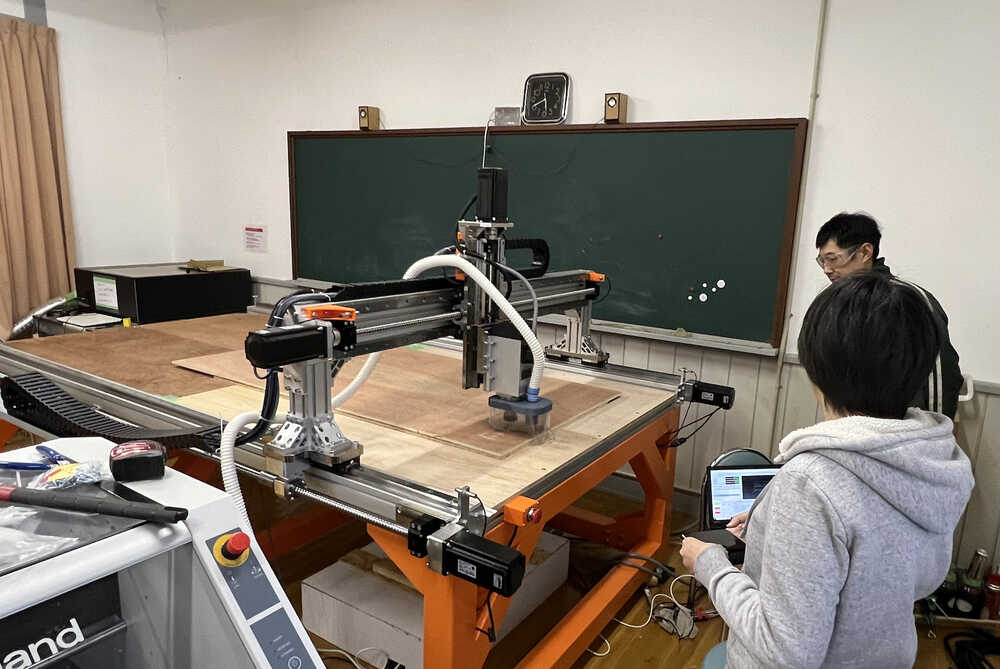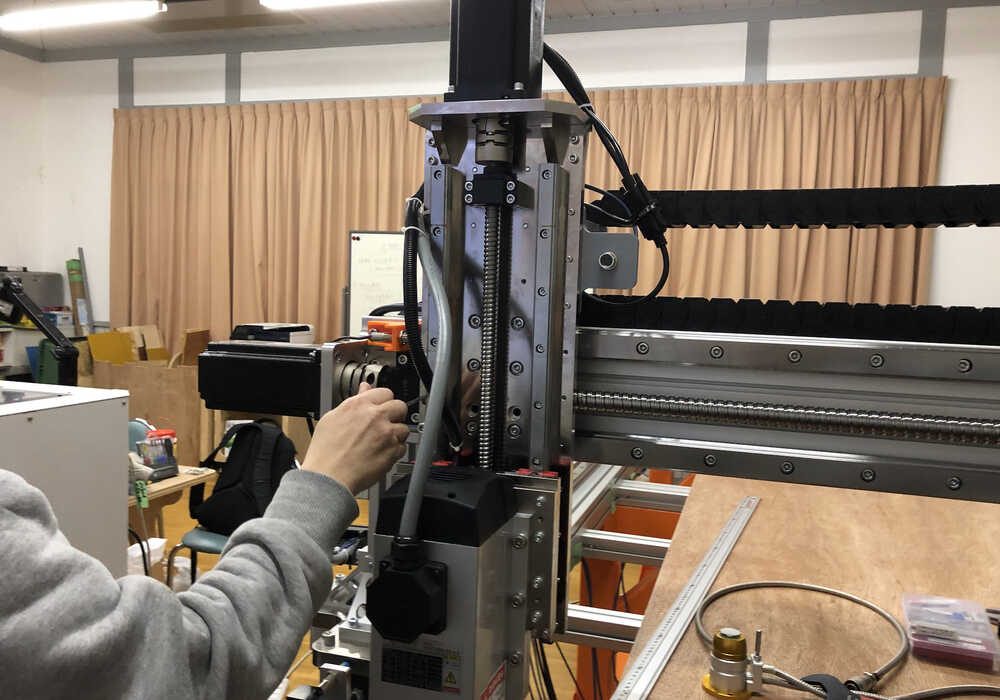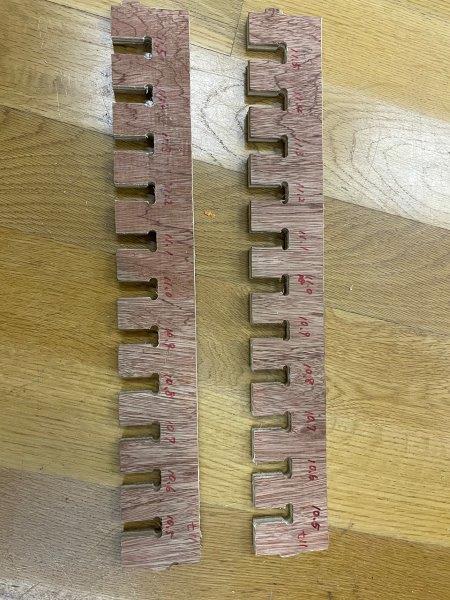Week 7. Group / Computer-Controlled Machining¶
This is group assignment page of Computer-Controlled Machining (Kitakagaya students) :
- Sosuke Kanegae
- Shin Masuoka
- Hiroe Takeda
Group Assignment¶
- Do your lab’s safety training
- Test runout, alignment, fixturing, speeds, feeds, materials, and toolpaths for your machine
Our Lab’s Safety Training¶
We had safety training at Fab Lab West-harima, and Fab Lab Kitakagaya.

We learned that CNC is a machine that can cause injury, blindness, death, and even fire due to mistakes. As safety measures, We learned to be aware of safety precautions, clothing, machinery, materials, emergency procedures, and many other items**.
Safety Precautions at West Harima¶
- During Operation, do not enter within 1 m of the machine while it is in operation, as bits and materials may break and scatter during cutting.
- Never approach the cutting path during machining.
- Do not work alone when working Always work with at least two people in all processes, including material fixing and machine operation.
- Never operate the machine unattended. Operate under operator supervision at all times during operation and be ready to respond to emergencies.
- Understand that rotating tools are a fire hazard because of the friction and heat they generate. Also, be sure to take measures to extinguish flames.
- Know the location of the emergency stop switch. If any abnormality (unusual noise, unexpected behavior, etc.) is sensed during machine operation, immediately press the emergency stop switch to stop processing.
- Always turn off the main power to the machine when performing work that directly touches the machine, such as fixing materials, changing tools, or adjusting positions.
- Do not climb on machinery, materials or spoil boards to prevent falls
- Do not cut material without making sure the material is securely fastened to the work surface. Understand that there is always a risk of flying broken material.
- Check the condition of consumables and do not use consumables that are worn, warped or distorted. (end mill, spoil board, etc.) *To avoid damage and fire hazard
- Do not operate when tired or sleepy.
- Do not get the main unit or power supply part wet.
- Do not disconnect or insert cables while the power is on, as this may result in the destruction of the equipment. When unplugging or plugging in cables, be sure to do so with the power turned off.
- When an accident occurs, do not deal with a small group of people, stop the machine, and call for help.
- Confirm emergency contact information, etc., and promptly contact the relevant authorities in the event of an emergency. (fire department, emergency services, hospitals, etc.)
Work Clothing¶
- Wear protective equipment such as earplugs, dust masks, goggles, etc.
- Wear appropriate work clothes (e.g., JIS-compliant work clothes) and safety shoes.
- Wearing jewelry of a shape that can easily get caught in the rotating parts of the machine is prohibited.
- When there is a risk of the operator’s hands getting caught in the rotating parts of the machine, the wearing of gloves is prohibited.
- If you have long hair, tie it up and put it in a hat, etc. (to prevent it from getting caught)
Pre-operational check¶

- Check for visible abnormalities such as loose screws, scratches, etc. (Especially check Z-axis screw)
- Confirm that safety devices (sensors) are working properly
- Confirm that protective functions (emergency stop button, etc.) are working properly
- Check the machining path (machining route)
- Confirm that there are no fixed screws in the machining path (machining route).
- Check machining origin setting
- Check condition of consumables (end mills, spoil boards, etc.)
- Check endmill chuck tightness (If loosely tightened, it will fly off.)
- Check dust collector tightness (If loosely tightened, it will fly off.)
- Do not touch the endmill blade (remove dirt with a toothbrush, etc.)
- During processing, a large amount of sawdust is generated. Before processing, a dust collector should be connected and operated. Also, sawdust should be disposed of
- Check that the material is securely fastened to the work surface (if the workpiece is not securely attached, it may fly off during processing)

- Check if the material is appropriate for processing by CNC (see below for appropriate materials)
Material conditions¶
- Materials that do not have or may not have embedded nails, screws, or other metal fragments
- Materials that do not contain moisture or humidity
- Material without warpage or warping
- Materials that can be safely fixed and processed with screws, clamps, etc.
the machining origin¶
- Pay attention to the machining origin, especially the origin of Z-axis. If it goes too far, it may penetrate to the CNC main unit.
Test¶
Our lab’s CNC Digico Mill was built up from scratch by our instractor. This has been just completed this week. We did the cutting test with Kerf Parts Check Generator intoroduced by A.Suzuki, 2022 student.

This time we use 11mm thick board. Then set the width from 10.5mm to 11.5mm.We made this svg data into a toolpath with Vcarve Pro. Then started cutting.
- Machine cutting done.

- Remove the board from the machine.

- Cut the tabs with han saw.

- Complete the cutting process.

- Now test the best gap for building furniture etc.

-
This case 11.3mm gap seems the best.

-
Instructor informed that as this is made of wood, it easily changes the thickness flatness etc. due to humidity and temperature. Besides if we bought less expensive boards, the size probably varies. So the figures we got this week are not always right.
The Original Machine made by Fab Lab West-harima¶
- We use Digico-MILL48 Version 5 (100mm square steel frame version), is completely original machine, was produced from planning, designing, manufacturing to installation, with the founder of Fab Lab West-harima and his friends.
- It took on the challenge of a 100mm square steel frame, and the team did all the welding and assembly of the frame by themselves, and it is recently build on 8- March, 2023.
- We joined with assistant to build it. It became a wonderful experience for us, to know how parts assemble, how connect wire, etc.
| machine spec | Description |
|---|---|
| Processable materials | Wood, Processable materials (Acrylic, Polycarbonate, PVC, etc), aluminum |
| Work area | About 1300 mm(w) x 2500 mm (L) x 150 mm (H) |
| Feed rate | 1-3000 mm/min |
| Spindle speed | max 18000 r/min |
Please allow me to share Video made by Fab Lab West-harima by Youtube, about the making video Digico-MILL48, due to long video (4mins) and the large video size.
Making CNC Version 1, 2020, 29 JAN to 15-OCT
Making CNC Version 5 (100x100 Steel Flame model), 2022-AUG 23 to 2023-MAR-12